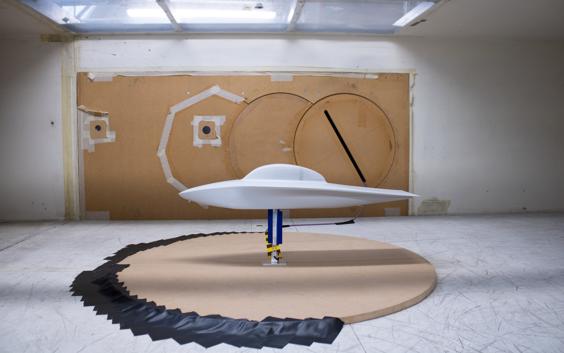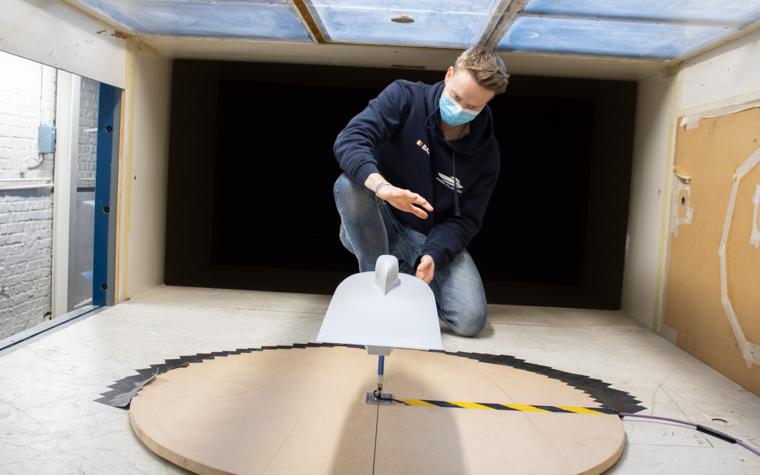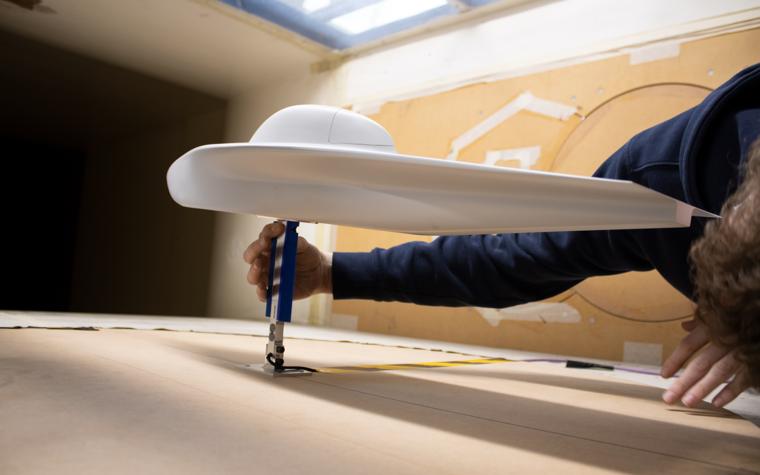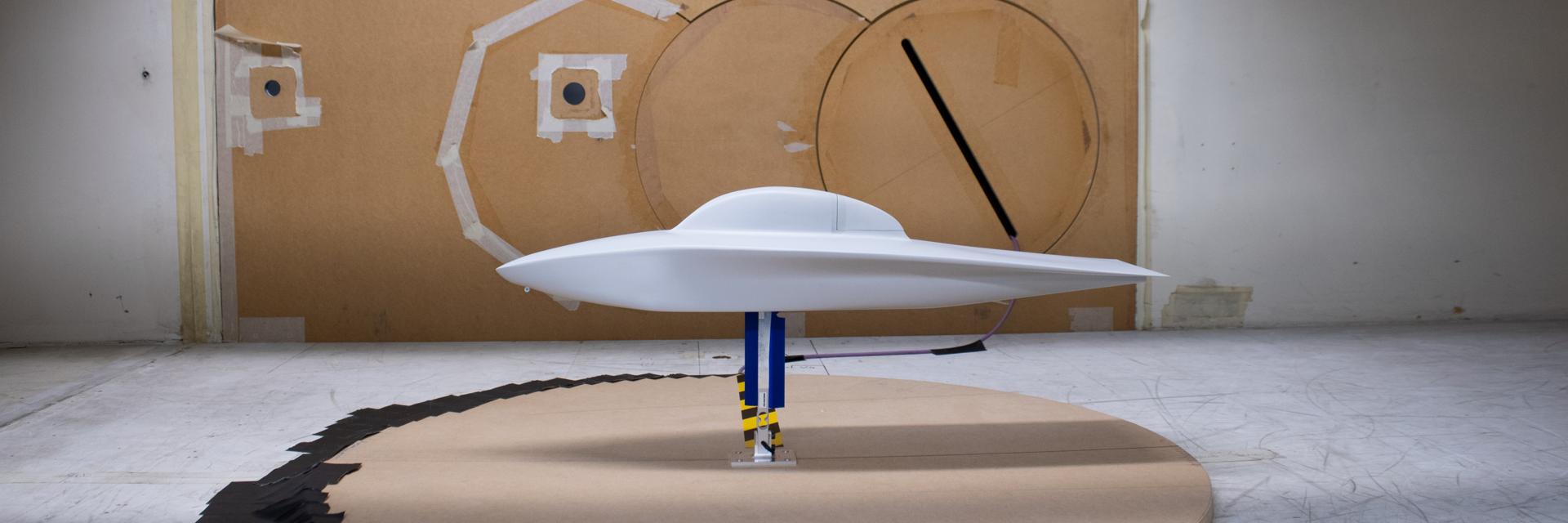CASE STUDY
Reducing the Cost of Wind Tunnel Testing with 3D-Printed Models

Because ensuring aerodynamic efficiency is a crucial part of designing a new vehicle, wind tunnel testing is invaluable — but it doesn’t come cheap. The Agoria Solar Car team turned to Materialise to 3D print a perfect scale model replica that would allow them to analyze their car’s performance quickly, affordably, and accurately.
The challenge
Help the Agoria Solar Team validate their simulations through scale model wind tunnel testing
Aerodynamics has always been a core area of focus in the automotive industry, whether for traditional road cars with internal combustion engines or high-powered race cars. Traditionally, these tests will make use of wind tunnels which allow engineers to determine how their vehicle’s performance is impacted by the air moving over or around it. Naturally, however, industrial-scale tunnels can be costly to rent or build.
This is particularly for the smaller groups like the Agoria Solar Team, a student body at KU Leuven that builds and races solar-powered cars. Materialise is proud to have partnered with this team for several very successful years. As reigning European and World champions, the team has known great success and is keen to hold onto its crown by ensuring this year’s car is as effective as possible.
Their solution was to create a scale model of their car that they could test in a much smaller wind tunnel at the Vrije Universiteit Brussel, for which they turned to Materialise and 3D printing for help.
“The solar race community is all about efficiency,” explains Zander Radelet, an aerodynamicist in the Agoria team. “Because you only have the energy of the sun, we have to use that energy as efficiently as possible. That’s why we made the car as aerodynamically efficient as possible, energetically as well.”


The solution
Design and print an 80 cm long scale model of the Agoria solar car using stereolithography (SLA)
Materialise helped the Agoria team design and print an exact scale model replica of their car, complete with adjustable parts, using stereolithography (SLA). This choice was primarily defined by the model’s requirements — its small size (80 cm long), complex shape, and weight requirements meant it would be almost impossible to create with traditional methods.
“We chose 3D printing because the measurement gets distorted if you have a very heavy car and your bracket is not measured exactly in the center,” Zander tells us. “You’ll experience some bending if it’s very heavy. Like this, we could already reduce that in the load zone.”
Here, Materialise’s expertise was particularly helpful. The model was complex, with a movable canopy — the shell where the driver is positioned — that could be taken in or out to test different geometries. Having a team on-hand to offer advice on both design and selecting the most suitable material was essential.


“We wanted the best possible surface finish with decent mechanical properties, but it wasn’t necessary for them to be like end-use materials because the loads were not that big. The biggest load was the weight itself, so it needed to be self-supporting. We discussed it with Sofie (Claes, Account Manager at Materialise) and decided resin was the best option.”
Within six weeks of the initial meeting, Zander and his team received the printed model and moved ahead with their test, rotating the car between zero and ten degrees while analyzing its crosswind behavior. Using Reynold’s scaling, the team could extrapolate the data gathered using the scale model to fit the actual car and validate their findings, making any necessary adjustments to their design before testing the real thing.
The result
The team was able to confirm its findings before proceeding to full-scale wind tunnel testing
For Zander and the rest of the Agoria team, the decision to begin their testing with a 3D-printed model proved wise. It helped them gather valuable data affordably and quickly while adding weight to their simulation results.
“With this model, we could really check the car's behavior, and it performed very well,” Zander recalls. “We saw some things that we didn’t see in the simulations, which is positive because the simulation is really guesswork. We saw some flaws in that simulation, so it was a very good test to learn more about them."


“It also gave us great insight into the workflow of wind tunnel testing, so when we repeated the test in full scale at the end of March, it was incredibly fluent.”
With the benefit of having run both a scale and full-sized test, Zander is well-placed to tell us how the two compare. As such, we asked him two key questions: were the results accurate, and is this approach something he would recommend to other engineers or even the automotive industry as a whole?
“The simulations with the scale model were fairly accurate, so we assumed it would be the same for the full-sized car. But because we estimated the surface roughness in our simulations and applied a matte finish rather than glossy, the drag on the real thing was a little higher,” he tells us.
“But the way the data was changing, like when the drag increases or decreases, came close to the simulations, except for the higher angles. That's inherently because the simulations cannot predict flow separation very well. It separated earlier than the simulations told us.”
As for whether or not this approach should take off within the wider industry, Zander believes it’s a matter of choosing horses for courses — the nature of the car being tested and the wind tunnel itself need to be taken into account.
“If your wind tunnel doesn’t have high speeds, you can’t transfer your flow conditions from small scale to full scale. For example, if you have a one-six model of a racecar that reaches 200 KM/H, you should have a wind tunnel that goes above the speed of sound. So you have to look at your application and scale your model wisely.”
This last point proved a particularly useful lesson for the team in terms of what they would change in the future. While the personnel changes every 12 to 18 months, this experience will serve as a great jumping-off point for any future aerodynamicists that choose to follow in their footsteps.
“If we could choose — and we had access to a big enough wind tunnel — we would probably print a bigger scale model, just to get more realistic flow conditions,” Zander concludes. “But we’ve definitely learned that the technology is suited for the test because the data didn’t disappoint us.”
Like the entire Agoria team, all of us here at Materialise are eager to see the fruit of these labors when the car hits the road to defend its crown in October this year.
Share on:
This case study in a few words
Automotive
Stereolithography (SLA)
Due to the size, complexity, weight, and surface finish requirements of the model, printing in resin was the most suitable option
